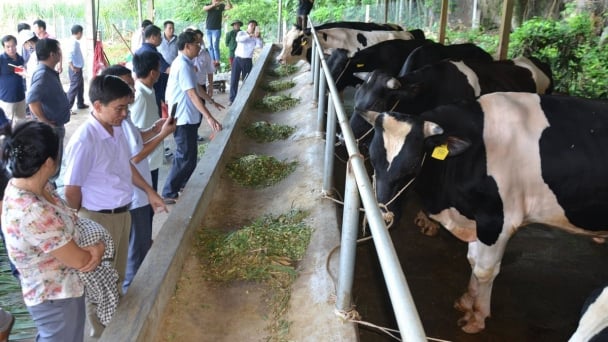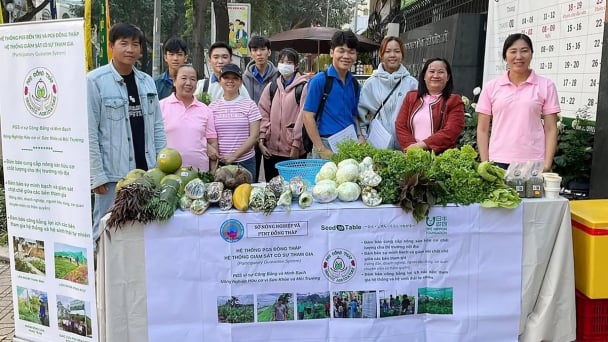May 22, 2025 | 08:44 GMT +7
May 22, 2025 | 08:44 GMT +7
Hotline: 0913.378.918
May 22, 2025 | 08:44 GMT +7
Hotline: 0913.378.918

In August, 32% of Vietnamese pangasius exports was accounted to China with a turnover of 374 million USD. Photo: Le Hoang Vu.
Regarding pangasius exports, in August, China accounted for 32% of the market share with a turnover of 374 million USD. The US market accounts for 16%, the EU market accounts for 10%. Other markets such as Brazil, England, and Mexico account for 3.6 - 5%.
Recently, the US Food Safety and Inspection Service (FSIS) evaluated the food hygiene and safety control system for Vietnamese pangasius exported to the US with positive results. This will be the force to boost pangasius exports to the US in the coming months.

Pangasius farming in the Mekong Delta. Photo: Le Hoang Vu.
“Although seafood export growth is still not equal to last year’s period, the market has shown signs of improvement since September. Notably, major markets such as China, the US, Japan, Korea and the EU have begun to increase imports to serve the year-end holidays,” said Ms. To Tuong Lan - Deputy General Secretary of the Vietnam Association of Seafood Exporters and Producers (VASEP).
An Giang is one of the leading provinces in the Mekong Delta in developing the pangasius farming and processing industry for export. An Giang’s total farming area in the first nine months of 2023 has reached 1,780 hectares, equal to the same period in 2022. The annual output has reached over 400,000 tons. The province currently has 20 enterprises with 23 pangasius processing factories, capacity reaching 323,420 tons/year. In 2022 alone, businesses in the province exported 162,000 tons of pangasius products, earning foreign currency of 380 million USD for the province, an increase of 1.59% in volume and 2.03% in turnover.
Mr. Nguyen Huu Dung, Director of the Department of Industry and Trade of Dong Thap province, says that pangasius is one of the province’s key export industries, accounting for more than 65% of export turnover. Dong Thap currently has 27 enterprises processing pangasius filets for export, with a total design capacity of over 700,000 tons/year, attracting over 20,000 workers. These factories all meet the safest production conditions in the world. domestic and international (BRC, ISO, HACCP...).
Since the beginning of 2023, Dong Thap has exported pangasius to 80 countries and territories. The US market accounts for 26% of the province’s total seafood export turnover, the Chinese market accounts for 25.4%, and the EU market accounts for 11%. Currently, the average production cost of white meat pangasius is 26,850 - 27,000 VND/kg, the average selling price is 26,300 - 26,500 VND/kg, and pangasius farmers can lose over 254 million VND/ha/crop.

Seafood exports in the Mekong Delta have shown signs of recovery, achieving positive growth in some markets, and helping many businesses overcome difficulties. Photo: Le Hoang Vu.
Mr. Doan Toi, General Director of Nam Viet Joint Stock Company (An Giang) says that although pangasius in the Mekong Delta is sold below investment cost, at this time, China - Hong Kong is still a large market-consuming Vietnamese pangasius product. Recently, Chinese traders ordered 500 containers of pangasius from Nam Viet Joint Stock Company, again showing that the Chinese market has reopened after three years of closure.
According to Mr. Toi, recently China imported pangasius in large quantities, so Vietnamese farmers are extremely excited. The large purchases by Chinese traders show businesses in this market must first have strong enough economic potential and extensive experience in production organization and market forecasting. The ability to respond to orders quickly and in large quantities can lead to success. To avoid risks (as in recent years), farmers need to connect with businesses through outsourcing farming models or farming in association with businesses. This will lower the risk of raising pangasius, so farmers no longer have to worry about output.
According to Ms. To Tuong Lan, seafood exports in the first nine months of 2023 reached more than 5.9 billion USD. Key products such as shrimp reached 2.2 billion USD, pangasius reached 1.2 billion USD, and other seafood reached nearly 2 billion USD. Ms. Lan analyzes trends in key products: Regarding shrimp exports, the major black tiger shrimp consuming markets are China, Japan, America, and Taiwan. Large markets importing white shrimp are the US, China, Japan, Korea, Australia, etc.
Although exports have not yet made a breakthrough, shrimp exports have had much higher sales in the last three months than in the first months of the year. The prosperity is evident in the US market, where sales have increased continuously over the months. Shrimp exports to China in July also recorded the second month of positive growth.
Translated by Quynh Chi
![Reducing emissions from rice fields: [2] Farmers’ commitment to the soil](https://t.ex-cdn.com/nongnghiepmoitruong.vn/608w/files/news/2025/05/05/dsc08881jpg-nongnghiep-140632.jpg)
(VAN) Clean rice cultivation model in Thuong Tan commune, Bac Tan Uyen district, is assisting local residents in achieving sustainable agriculture by substantially reducing costs, increasing productivity, and protecting the environment.

(VAN) At the conference to disseminate Resolution No. 68, AgriS introduced its digital agricultural ecosystem and reaffirmed its commitment to accompanying the Government in promoting private sector development and sustainable agriculture.

(VAN) 'Blue Ocean - Blue Foods' initiative is designed to restore marine ecosystems and establish sustainable livelihoods for local communities by cultivating a minimum of 1,000 hectares of cottonii seaweed in the first three years.
/2025/05/21/4642-3-112707_603.jpg)
(VAN) The V-SCOPE project has made direct contributions to three out of six pillars of the Comprehensive Strategic Partnership between Vietnam and Australia.

(VAN) Facing the threat of rabies spreading to the community, Gia Lai province urgently carries out measures to vaccinate dogs and cats on a large scale.

(VAN) Disease-free livestock farming not only protects livestock herds but also stabilizes production and livelihoods for many farmers in Tuyen Quang.

(VAN) Japan's grant aid project contributes to capacity building, promoting organic agricultural production, and fostering sustainable community development in Dong Thap province.